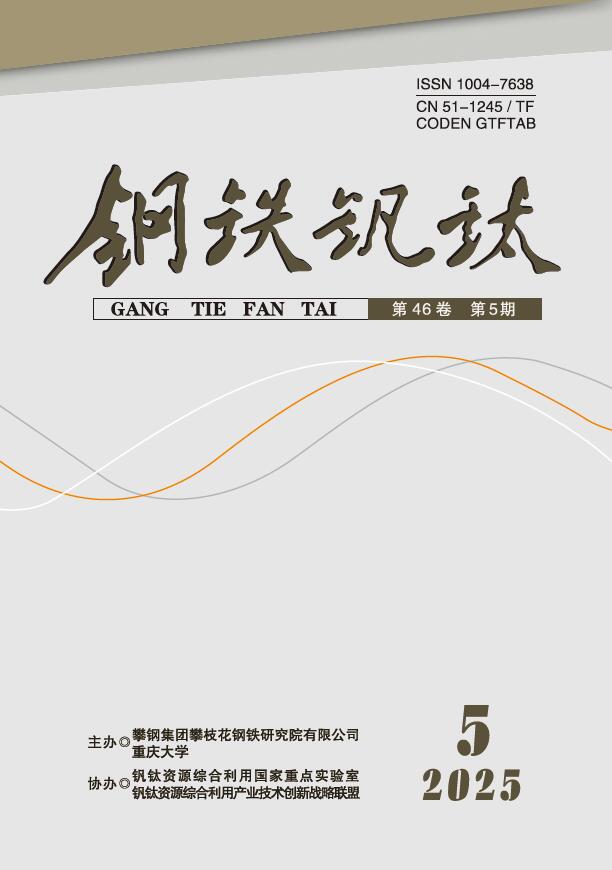Accurate and timely prediction of hot metal temperature (HMT) is crucial for ensuring stable operation and improving hot metal quality in vanadium-titanium magnetite blast furnaces. Leveraging long-term field data, an HMT prediction model was developed for blast furnaces by integrating domain knowledge with data-driven strategies and combining an attention mechanism with long short-term memory neural networks (LSTM). Firstly, a feature matrix of the vanadium-titanium magnetite blast furnace smelting process was constructed by integrating smelting experience, rules, and data analysis techniques. Dimensionality reduction techniques were applied to reduce the feature dimension to 28, effectively reducing the prediction complexity. Secondly, we constructed a multi-time-step prediction model based on the LSTM architecture, using historical operation data from different time windows as inputs. By introducing an attention mechanism from deep learning to capture the importance of input features, the model's prediction accuracy was further improved. The results show that the model achieved a hit rate of 92.5% within a ±5 ℃ error range, realizing high-precision online prediction of hot metal temperatures in vanadium-titanium magnetite blast furnaces. This model provides an important reference for condition judgment and operation evaluation of blast furnaces.
As the core catalyst for maleic anhydride in the n-butane process, vanadium-phosphorus-oxygen (VPO) catalysts, with their low n-butane conversion and maleic anhydride selectivity, can hardly satisfy the industrial demand for the efficient production of maleic anhydride, and therefore the development of high-performance vanadium-phosphorus-oxygen (VPO) catalysts has become a hot spot in research. On this backgroud, we have reviewed in this paper the progress of the preparation of high-efficiency vanadium-phosphorus-oxygen catalysts in recent years, and have discussed particularly on the effects of raw material and solvent selection, preparation method, activation atmosphere, additives and carriers on the catalytic performance. We have found that the factors mentioned above modify mainly the catalysts by altering the catalyst's specific surface area, active crystal surface strength, surface acidity, V4+/V5+ or P/V ratio. These modifications help to expose more active sites, to promote n-butane C-H bond breaking and to induce the oxidation of n-butane to improve the n-butane conversion or maleic anhydride selectivity. Finally, we have summarized and compared the effects of different influencing factors on the catalytic performance of VPO, and have suggested that the addition of additives is the development trend for the preparation of high-performance VPO catalysts. We look forward to the development of additives in the future in terms of the selection of raw materials, the structural design and modification, and the cost.
The flow behavior of rock and ore debris is one of the critical factors affecting the ore loss rate and dilution rate in the sublevel caving method. Based on the mining characteristics of an underground mine in the Panxi region, the shape of drawn-out body of rock and ore debris was determined using the hole volume measurement method, and numerical simulations were conducted with the "Particle flow code in 2 dimension (PFC2D) " software. The flow characteristics of the debris and their impact on the dilution and loss rates were analyzed. Results indicate that the drawn-out body of ore obtained from both numerical simulation and laboratory testing are largely consistent, exhibiting well-defined ellipsoidal development features. The primary cause of high dilution and loss rates is the incorporation of waste rock at the top, front, and sides of the drawn-out body of ore. Based on these findings, recommendations for optimizing the layout of the ore drawing openings were proposed, providing a theoretical foundation to enhance recovery rates at the mine.












